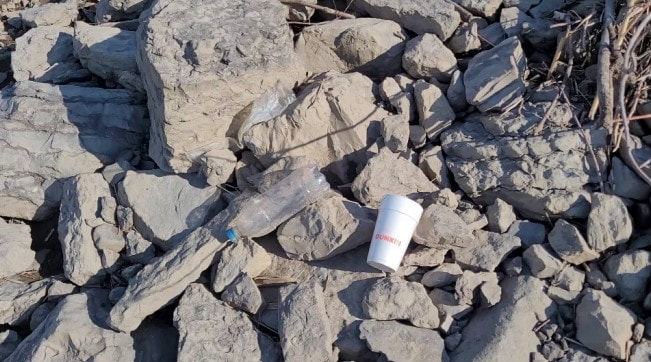|
When I first noticed it about a year ago, a study by Susquehanna University’s Freshwater Institute fascinated me on a variety of levels. The group studied contents of 206 smallmouth bass stomachs collected from the Susquehanna River and Pine Creek (a tributary to the West Branch) over the course of three years (2017-2019). In 2017, 87.5 percent of the samples contained microplastics (small plastic fragments and threads), with an average of 2.3 microplastics per fish. That number climbed to 95.5 percent in 2018 specimens (6.1 per fish) and 100 percent of those collected in 2019 (28.9 per fish). Perhaps even more mind-blowing to me was that 1. Nobody seemed to really know about this study and 2. Not many seemed to realize the implications of these microplastics proliferating our waterways. Fast forward to last week when a new microplastic study suggested that every waterway in the state harbors a variety of microplastic particles. According to a story by State Impact, an environmentally focused reporting project of the NPR, researchers took 315 samples from 53 bodies of water throughout the commonwealth over the course of 2020, including the Allegheny, Monongahela and Ohio rivers in western Pennsylvania; the Susquehanna River and Conodoguinet Creek near Harrisburg; the Spring Creek, Cedar, and Slab Cabin runs in the State College area, and the Schuylkill and lower Delaware rivers and the Wissahickon, Neshaminy, Tookany, and Tohickon creeks around the Philadelphia region. Then they tested them for four types of microplastics: fibers, which come primarily from synthetic clothing and textiles; fragments, which come from harder plastics — think milk jugs, shampoo bottles, etc.; film, which comes primarily from plastic bags and other flexible plastic packaging; and beads, which are mostly sourced from facial scrubs and other cosmetic products. At every single site sampled, they found plastic microfibers, with the majority of waterways also containing plastic microfragments and microfilm, and only a small percentage of sites harboring microbeads.
One of the common questions I get concerning microplastics involves where they come from – and it can be hard to pinpoint one specific source. Of course, litter that winds up in our waterways breaks down over time, leaving plastic fragments. There are companies that likely aren’t filtering out plastic particle waste from the water they discharge. However, the cause may be more far-reaching than most realize. Take, for example, normal household tasks such as doing the laundry. One study suggests that for every synthetic article of clothing you wash, upwards of 1,500 microplastic fibers ultimately are discharged in the water that leaves your washer. Considering that statistic alone, there can be a number of things you can do in your daily life to cut back on the amount of microplastics that eventually make it into our waterways. One is to avoid purchasing clothing made of synthetic materials. Another would be to mindfully wash your clothing less often. A third solution would be to wash your clothing in a front-loading machine vs. a top-loader with a central agitator. A study by the University of California Santa Barbara suggests that clothes cleaned in a top-loading washer release 170 percent more microplastic fibers than those in front-loading machines. Changing our laundry habits is just one way to potentially curb the flow of microplastics into our waterways. In the next several months, the Middle Susquehanna Riverkeeper Association will be doing more research and investigative stories on the microplastic pandemic in our waterways, what ripple effect it could have on our aquatic ecosystems and human health factors and some ways we can realistically make changes to clean up our river and its tributaries. Please consider helping our efforts to raise awareness and spark change by donating through 11:59 p.m. tonight (Thursday, March 11) via Raise the Region.
1 Comment
Leave a Reply. |
AuthorsRiverkeeper John Zaktansky is an award-winning journalist and avid promoter of the outdoors who loves camping, kayaking, fishing and hunting with the family. Archives
July 2024
Topics |

 RSS Feed
RSS Feed